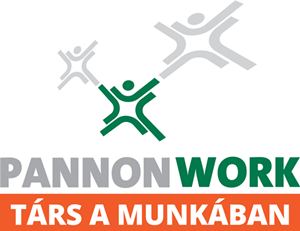TOKYO — North Korea defiantly celebrated its fifth nuclear test Friday, claiming that it can now make warheads small enough to fit onto a missile and warning its „enemies” — specifically the United States — that it has the ability to counter any attack.

Although the North’s proclaimed advancements could not be verified — and Pyongyang has a track record of exaggeration — the test appeared to mark another step toward North Korea’s goal of putting a nuclear warhead on a weapon capable of reaching the mainland United States.
Friday’s test — the North’s second this year — underscored the ability of Kim Jong Un’s regime to make progress on its nuclear and missile programs despite waves of international sanctions and isolation.
[Everything you need to know about the North Korea nuclear test]
“This is our response to hostile powers, including the United States. We are sending out a message that if the enemies attack us, we can counterattack,” Ri Chun Hee, the veteran North Korean newsreader, said on state television. „We will continue taking measures to protect our dignity and our right to exist from the American threat.”
The test also appeared to be much bigger than North Korea’s previous four detonations since its first in 2006.
The U.S. Geological Survey detected an artificial 5.3-magnitude earthquakenear North Korea’s nuclear test site at 9 a.m. local time on Friday, the 68th anniversary of the formation of the communist regime by Kim Il Sung, the current leader’s grandfather, and a national holiday.
“This is clearly a nuclear test,” said Jeffrey Lewis, director of the East Asia nonproliferation program at the James Martin Center for Nonproliferation Studies in Monterey, Calif. He estimated the size at between 10 and 20 kilotons. The North’s last nuclear test, carried out in January’, was about six kilotons.
The test happened just a few hours after President Obama’s plane stopped in Japan to refuel on his way home from Laos, where he had been attending the Asean summit. The president talked to South Korea’s president, Park Geun-hye, who was still in Laos, and Japanese Prime Minister Shinzo Abe, said White House press secretary Josh Earnest.
„The president reiterated the unbreakable U.S. commitment to the security of our allies in Asia and around the world,” Earnest said. „The president indicated he would continue to consult our allies and partners in the days ahead to ensure provocative actions from North Korea are met with serious consequences.”
[These North Korean missile launches are adding up to something very troubling]
China, the closest thing North Korea has to an ally, issued a statement “resolutely” opposing the test, which took place “despite the widespread objection of the international community.”
“We strongly urge North Korea to keep its promise to denuclearize, to abide by relevant resolutions from the U.N. Security Council and to stop making any moves that worsen the situation,” the statement from China’s foreign ministry said.
In its official announcement of what it said was a “nuclear warhead explosion test,” North Korea claimed that it had been able to make “smaller, lighter and diversified nuclear warheads of higher strike power.”
“This has definitely put on a higher level the [country’s] technology of mounting nuclear warheads on ballistic rockets,” said the statement, carried by the official Korean Central News Agency.
Kim has been ordering speedy progress on missile development — as evidenced by the recent salvos of medium-range missiles — and has been making observable gains with its nuclear devices. But there remains no clear evidence that North Korea’s scientists have been able to put the two together to make a warhead that can be delivered to a target.
However, a growing number of analysts and American military chiefs believe it is just a matter of time until North Korea masters this technology.
This test seemed to have a dual purpose, said Yang Moo-jin, a professor at the University of North Korean Studies in Seoul.
“Domestically, Kim Jong Un wants to present himself as a strong leader standing strong against the U.S.” he said, suggesting this could be because Kim, at 32, is young but also perhaps because recent high-level defections have raised speculation of cracks in the regime.
“Internationally, this test is designed to show that sanctions imposed against North Korea and international pressure are not working. They’re urging the world to accept its failure and revise its North Korea policy,” Yang said.
Friday’s test highlights North Korea’s continued defiance, but also the ineffectiveness of even the most recent waves of tough sanctions imposed after the nuclear test in January, analysts said.
“The whole expectation eight or nine months ago was that sanctions were finally going to bring North Korea to heel, but clearly that is not the case,” said David Kang, a professor of international relations at the University of Southern California. “Clearly they respond to pressure with pressure of their own.”
[North Korea hails ‘greatest success’ of submarine-launched ballistic missile]
Still, the international community would look for ways to inflict more pain on North Korea, which is already under sweeping sanctions.
“North Korea’s desperate dependence on nuclear development is testimony to Kim Jong Un’s fanatical recklessness,” said South Korea’s president Park, who cut short her visit to Laos to return to Seoul. North Korea’s provocations will do nothing but accelerate its self-destruction.”
In Tokyo, prime minister Abe also struck an angry tone.”If North Korea conducted a nuclear test, I can’t absolutely tolerate it,” he said. „We have to strongly protest.”
After North Korea’s nuclear test in January — which the regime claimed was of a hydrogen bomb — and a long-range ballistic missile test in February, the U.N. Security Council imposed tough new sanctions.
It ordered a ban on mineral exports from North Korea, a major source of income for the regime, and strict inspections of all cargo going in and out of the country. The United States followed with new financial sanctions and by designating Kim Jong Un by name for human rights abuses. South Korea has also taken a strident approach, closing an inter-Korean industrial park that had been a major source of revenue for the regime.
But Kim has not wavered, testing a range of missiles this year and apparently making some technological progress, including on a submarine-launched ballistic missile.
“There’s now obvious progress in North Korea’s nuclear and missile programs. They seem to be making precisely the technical progress that people don’t want,” said Euan Graham, a security expert at the Lowy Institute in Sydney who once served as a British diplomat in Pyongyang. “North Korea is obviously prepared to take the economic pain and is able to continue to materially supply the two programs.”
[ U.S. policy on North Korea relies on China — and provokes it at the same time]
On Monday, North Korea launched three medium-range missiles as China was hosting a meeting of G-20 leaders, including Obama. The rockets flew 620 miles, falling inside Japan’s air defense identification zone.
A day after those launches, the Security Council issued its latest condemnation.
“The members of the Security Council deplore all the Democratic People’s Republic of Korea’s ballistic missile activities, including these launches, noting that such activities contribute to [its] development of nuclear weapons delivery systems and increase tension,” the council said in statement Tuesday, using North Korea’s official name.
Analysts expect another round of discussions on ways to put pressure on North Korea.
„Sanctions and targeted financial measures may take time to have an impact on the regime’s financial condition,” said Bruce Klingner, a northeast Asia specialist at the Heritage Foundation, a conservative Washington-based think tank.
The difficulty, Klingner said, would be in maintaining international resolve. Sanctions can not be effectively implemented without the support of China.
China’s implementation of sanctions has been patchy in the past, and some analysts are concerned that Beijing, angered by South Korea’s decision to host an American anti-missile battery, might lose its appetite for enforcement.
Yoonjung Seo in Seoul, Gu Jinglu in Beijing and Yuki Oda in Tokyo contributed to this report.
https://www.washingtonpost.com/world/north-korea-conducts-fifth-nuclear-test-as-regime-celebrates-national-holiday/2016/09/08/9332c01d-6921-4fe3-8f68-c611dc59f5a9_story.html?hpid=hp_hp-top-table-main_nkoreatest-935pm%3Ahomepage%2Fstory




